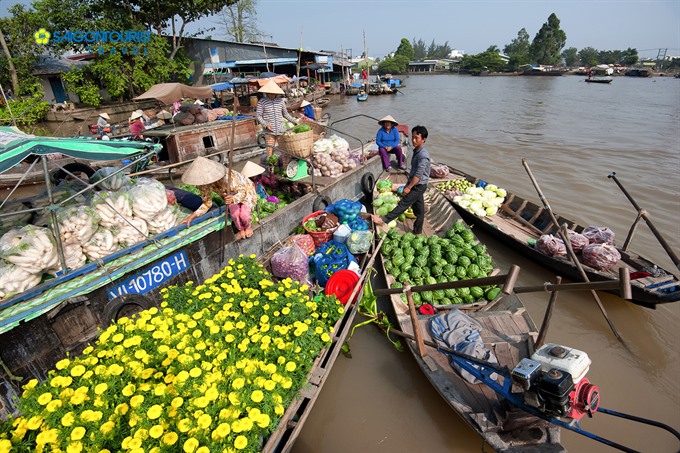


|
A view of Cái Răng Floating Market in Cần Thơ City
|
The Cái Răng floating market reflects the unique cultural values
and lifestyle of the Mekong Delta, said Vương Công Khanh, vice chairman of the
city’s People’s Committee. It has long become a popular tourist destination in
the Mekong Delta.
In 2016, the Ministry of Culture, Sports and Tourism recognised
Cái Răng market as a national intangible cultural heritage.
This recognition was an advantage for Cần Thơ tourism, but the
city has yet to realise its potential due to low investment in tourism
infrastructure, Khanh said at a workshop held on Sunday in Cần Thơ City.
Participants said that the lack of docking berths, restaurants and
clean public toilets in locations popular with tourists hindered the
attraction of tourists to the market.
The floating market is not well organised or managed, resulting in
overpriced and poor quality goods as well as damage to the environment.
Nguyễn Thị Mỹ, head of Cần Thơ City’s heritage management
committee, said that city authorities should better manage the price lists of
goods and services at the market.
An on-site tourism workforce should also be professionally
trained, especially in foreign languages, experts said.
The workshop was part of the activities of the annual Cái Răng
Floating Market Culture and Tourism Festival that wrapped up on Monday.
The three-day event honoured the cultural values of the floating
market and promoted the image of the tourist site to local and foreign
travellers.
The Cái Răng floating market, located about 6km from the centre of
Cần Thơ City, is one of the three biggest floating markets in the Mekong Delta.
In the first six months of the year, Cần Thơ City welcomed nearly
300,000 tourist arrivals, up 13.7 per cent year-on-year, including 35,500
foreign tourists, according to the city’s Department of Culture, Sports and
Tourism. Cái Răng Floating Market received more than 145,400 visitors.
Source: VNS